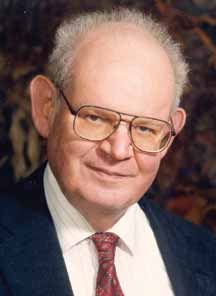 |
The Fractal Revolution November 8th, 2002 |
 |
Benoit Mandelbrot IBM Watson, Yale University |
The most important mathematician of the last century, the creator of fractal geometry. |
The surprising esthetic value of many of his discoveries and their unexpected usefulness in teaching have made him an eloquent spokesman for “the unity of knowing and feeling.” |
| Pioneering mathematician Benoit Mandelbrot is known as the creator of fractal geometry. Mandelbrot is one of the few living mathematicians whose originality has given birth to entire disciplines, said physicist Philip Morrison. His lectures are lively, Gallic in tinge and taste, clear to the non- mathematical, and can reach a memorable level for many who never imagined they would resonate with novel mathematics. The surprising esthetic value of many of his discoveries and their unexpected usefulness in teaching have made him an eloquent spokesman for the unity of knowing and feeling. He was largely self-taught, allowing him to think in unconventional ways and develop a highly geometrical approach to mathematics. In 1958, Mandelbrot joined IBM, delving into processes with unusual statistical properties and geometric features. This led to his famous contributions in fractal geometry. His 1967 article in Science, "How long is the coast of Britain?", is generally considered a milestone in science and mathematics. He coined the word 'fractal' to describe objects, shapes or behaviors that have similar properties at all levels of magnification. The concept has found applications in such diverse fields as physics, economics, the earth sciences and linguistics. The colorful symmetry of computer- generated fractal graphs has captured the imagination of artists, scientists and the public. |
How long is the coast of Britain? Title of famous 1967 paper in Science Magazine |
Study Guide  Fractal Geometry  Looney Moons: Chaos, Order and Strange Behaviors |